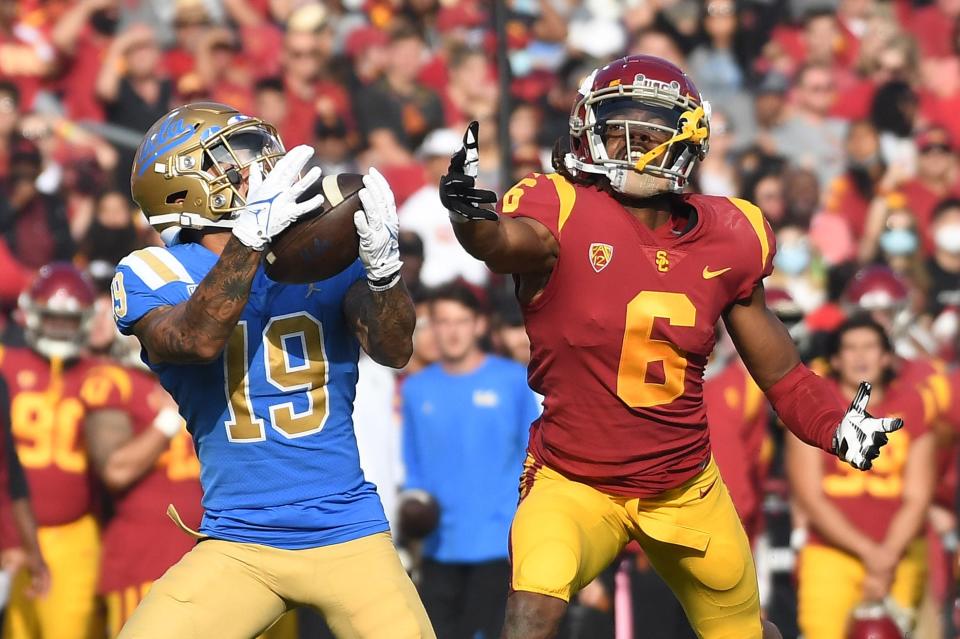What we know: College football expansion evolving as Big Ten, Pac-12 face more decisions
College sports realignment appeared to be in a place of stability after the expansion activity of the early 2010s ended with the five major conferences intact.
There would be peace and harmony across the land. For less than 10 years.
Last summer, news broke that Oklahoma and Texas would be departing the Big 12 for the SEC, drastically altering the conference landscape and throwing a wrench into the seemingly settled College Football Playoff expansion.
There was predictably a ripple effect. The Big 12 grabbed teams from the American Athletic and also Brigham Young. The ACC, Big Ten and Pac-12 created an alliance to address the worries of the SEC becoming too big to fail. That alliance lasted all of 10 months before the Big Ten poached two of the Pac-12 landmark schools - Southern California and UCLA - last week.
Now chaos rules with the era of the Power Five greatly in doubt.
How this all winds up is anybody's guess. But one thing is certain: There's more change to come and money and fear of being left out will drive the decisions by both conferences and schools.
Here's a look at where things stand now and an analysis of the biggest questions about where they could be headed.
Why did USC and UCLA head east?
The decision by two Los Angeles schools to leave a conference they have been associated with for almost 100 years for a league where there are no schools in the neighboring time zone and will feature road games in November with the likes of Minnesota, Michigan or Wisconsin tells you - if you didn't know already - how much money is driving college athletics.
The fact that it is the Big Ten raiding the Pac-12 is even more illuminating. The leagues have been sending its champions to play in the Rose Bowl for more than 60 years with modification for the playoff era. The value of playing in Pasadena on New Year's Day has been huge for the Trojans and Bruins. Now they'll have to do it as a member of the Big Ten.
How might the Big Ten divisions work?

The league will reach 16 teams when it adds Southern California and UCLA before the 2024 season. Stretching from New York to Los Angeles, it does seem an unwieldy setup. A split of East and West divisions helps mitigate those concerns for football.
The simplest move would put USC and UCLA with Nebraska, Iowa, Minnesota, Wisconsin, Illinois and Northwestern. Purdue would move to the East with Ohio State, Penn State, Michigan, Michigan State, Indiana, Rutgers and Maryland. Or they could balance the divisions or eliminate entirely.

 Yahoo Autos
Yahoo Autos 